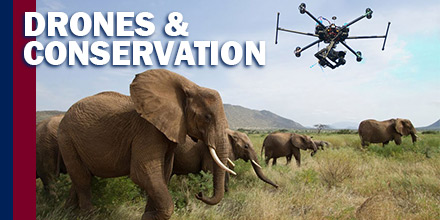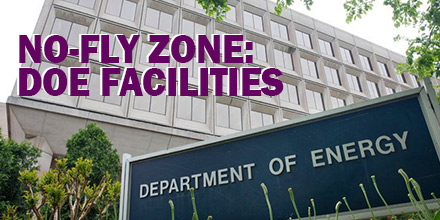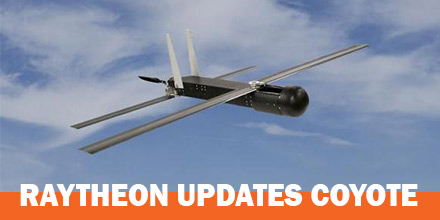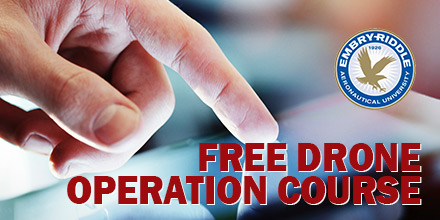
The race to develop vehicles powered by clean energy is well on its way. Currently, electric and hybrid cars are readily available on the market. As for drones, most already rely on "clean energy" in the form of lipo batteries, to operate.
Solar energy is one sector, however, where exploration is still in its infancy.
Recently, researchers from the Autonomous Systems Laboratory and Glaciologists from ETH Zurich collaborated on a special project: Sun2Ice. The goal? Develop a solar-powered drone and test its ability to monitor glaciers over the vast expanse of the Arctic.
Given the size and immensity of glacial landscapes, the challenge for scientists was designing a vehicle that offered extended flight times. To accomplish this, the team looked to harness the power of the sun.
The end result was AtlantikSolar, a UAV equipped with solar panels that allowed it to stay aloft for days.
An ideal testing ground
In terms of finding an optimal place to test this developmental craft, the Polar Regions -- with its continuous daylight -- proved ideal. The research team hoped to use the midnight sun to create perpetual unmanned flight conditions. And, thus, provide the UAV the endurance required to survey the vast landscape.
Guillaume Jouvert, a Hydraulics, Hydrology and Glaciology senior researcher, and Thomas Stastney, a PHD student in Autonomous systems at ETH Zurich, lead the project. They put together two teams from their respective fields to attempt that goal.
Countdown to Take Off
As can be expected with any event that requires the weather to play nice, things didn’t quite go according to plan. But the results of the test still provided some useful insight. Qaanaa, a small town in Northwestern Greenland, served as the epicenter. This test location is surrounded by several calving glaciers, accessible by plane, yet still well connected. Tests were to occur in June 2017. However, when the team arrived a takeoff and landing spot identified months earlier, was no longer viable.
The UAV's payload included a ground-facing camera and additional sensitive equipment. Rough landings were out of the question. So began a week of feverish work to create a suitable landing site for the UAV. Additional delays included heavy fog that lasted for several days. Despite the setbacks, clear skies opened up at the end of June. The tests could finally start.
The first test flight for AtlantikSolar’s was a 24-hour circular trip. The solar-powered craft took off on June 20.
Unfortunately, 12-hours into the flight, the test was cut short as thick fog returned to the region. Still, the team collected vital data. Remarkably, despite poor sunlight and stronger than expected winds, battery levels were still high, at 60 percent.
The data suggested that AtlantikSolar was on pace to achieve 20-hours of uninterrupted flight, despite the poor weather conditions. The data also suggested that 24-hour continuous flight time was achievable given the right conditions. Additionally, the results convinced researchers that the drone was ready to begin surveying glaciers. Unfortunately, the weather wasn’t done yet.
Solar-powered drone
It wasn't until July 3 that the weather cleared for the second launch. AtlantikSolar approached its first glacier less than two hours after take-off. The UAV captured images of the calving front of Bowdoin Glacier despite winds of up to 15 m/s buffeting the unmanned aircraft. AtlantikSolar successfully returned to Qaanaaq after 5-hours of flight covering 230km.
The drones’ battery still retained nearly a full charge, showing the true potential of solar-powered UAVs. In addition, the team discovered the beginnings of a break forming at the front of the large glacier. AtlantikSolar’s mapping information allowed glaciologists to visit Bowdoin in time and monitor the cracks progression until it finally broke away.
Beyond surveying the arctic, solar-powered drones have tremendous application potential. Geographic locations which enjoy long periods of uninterrupted sunshine are particularly applicable. Solar-powered UAVs, like AtlantikSolar, are low-cost vehicles with the added benefit of using renewable energy.
The results achieved by Guillaume and Thomas along with their respective teams show that harnessing the power of the sun to power vehicles is feasible in the right conditions. Of course, there is a need for additional research and development before such vehicles become commonplace. But, with the promising results achieved by AtlantikSolar, it seems like solar-powered drones are well on their way.
 An unlikely contender in the battle for wildlife conservation has entered the ring: drones.
Thanks to an ability to cover large areas at low costs, drones are playing a part in the reduction of wildlife threats.
Globally, drones aid in everything from migration tracking and nest surveys to habitat management and anti-poaching activities.
Drones are changing wildlife conservation around the world.
An unlikely contender in the battle for wildlife conservation has entered the ring: drones.
Thanks to an ability to cover large areas at low costs, drones are playing a part in the reduction of wildlife threats.
Globally, drones aid in everything from migration tracking and nest surveys to habitat management and anti-poaching activities.
Drones are changing wildlife conservation around the world.

 At the request of U.S. national security and law enforcement agencies, the
At the request of U.S. national security and law enforcement agencies, the  Recently, Raytheon announced the development of a “Block 2” update of the Coyote, a tube-launched unmanned aircraft system (UAS) it acquired more than two years ago.
The aim is to produce a low-cost, multi-mission-capable air vehicle that users ultimately dispose of once it completes a mission.
“We do recover and reuse them in our development work. However, for operational use and purposes, it is meant to be disposable or ‘attritable’. It’s meant to be a one-time platform just like a Tomahawk missile,” said John Hobday, Raytheon’s Coyote business development lead.
“The difference is that we are approaching the Coyote platform not only as a disposable, but as a low-cost system. That’s part of the disruptive nature of what we’re trying to do with this platform—to create this low-cost appliance, if you will.”
Recently, Raytheon announced the development of a “Block 2” update of the Coyote, a tube-launched unmanned aircraft system (UAS) it acquired more than two years ago.
The aim is to produce a low-cost, multi-mission-capable air vehicle that users ultimately dispose of once it completes a mission.
“We do recover and reuse them in our development work. However, for operational use and purposes, it is meant to be disposable or ‘attritable’. It’s meant to be a one-time platform just like a Tomahawk missile,” said John Hobday, Raytheon’s Coyote business development lead.
“The difference is that we are approaching the Coyote platform not only as a disposable, but as a low-cost system. That’s part of the disruptive nature of what we’re trying to do with this platform—to create this low-cost appliance, if you will.”
 To choose the optimal drone propeller blade, the user should consider a number of factors.
Drone propeller blades have a significant influence on power and affect how smoothly a drone flies.
As such, flight efficiency is one of the most important considerations. It begs the question, how will new drone propeller blades improve the flight efficiency of your multi-rotor UAV?
When selecting new drone propeller blades, the following factors are important considerations:
To choose the optimal drone propeller blade, the user should consider a number of factors.
Drone propeller blades have a significant influence on power and affect how smoothly a drone flies.
As such, flight efficiency is one of the most important considerations. It begs the question, how will new drone propeller blades improve the flight efficiency of your multi-rotor UAV?
When selecting new drone propeller blades, the following factors are important considerations:
 Embry-Riddle Aeronautical University’s
Embry-Riddle Aeronautical University’s  The race to develop vehicles powered by clean energy is well on its way. Currently, electric and hybrid cars are readily available on the market. As for drones, most already rely on "clean energy" in the form of lipo batteries, to operate.
Solar energy is one sector, however, where exploration is still in its infancy.
Recently, researchers from the Autonomous Systems Laboratory and Glaciologists from ETH Zurich collaborated on a special project: Sun2Ice. The goal? Develop a solar-powered drone and test its ability to monitor glaciers over the vast expanse of the Arctic.
Given the size and immensity of glacial landscapes, the challenge for scientists was designing a vehicle that offered extended flight times. To accomplish this, the team looked to harness the power of the sun.
The end result was AtlantikSolar, a UAV equipped with solar panels that allowed it to stay aloft for days.
The race to develop vehicles powered by clean energy is well on its way. Currently, electric and hybrid cars are readily available on the market. As for drones, most already rely on "clean energy" in the form of lipo batteries, to operate.
Solar energy is one sector, however, where exploration is still in its infancy.
Recently, researchers from the Autonomous Systems Laboratory and Glaciologists from ETH Zurich collaborated on a special project: Sun2Ice. The goal? Develop a solar-powered drone and test its ability to monitor glaciers over the vast expanse of the Arctic.
Given the size and immensity of glacial landscapes, the challenge for scientists was designing a vehicle that offered extended flight times. To accomplish this, the team looked to harness the power of the sun.
The end result was AtlantikSolar, a UAV equipped with solar panels that allowed it to stay aloft for days.
